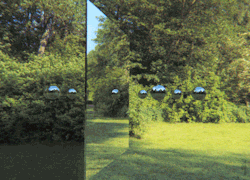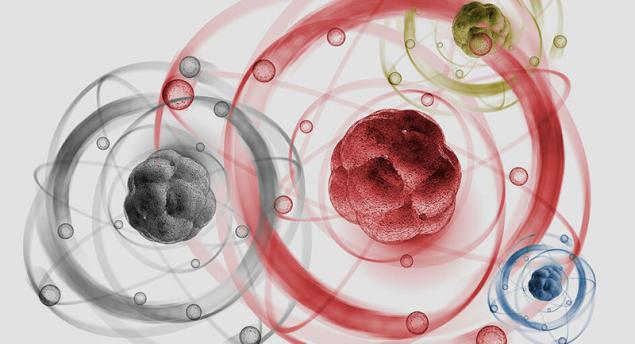772
To understand the universe: what is the quantum of and why its so fond of psychics
Depending on the point of view of quantum theory - it is a testimony of the vast progress of science, or a symbol of the limited human intuition, which has been dealing with strangeness subatomic spheres
. For physics, quantum mechanics - one of the three great pillars on which is based the understanding of nature (in addition to general and special theories of relativity). For those who always wanted anything to understand in the fundamental structure of the world model, the scientists explain, Brian Cox and Jeff Forshaw in his book "The Quantum Universe". We publish a short passage about the nature and origins of quantum theory.

Einstein's theories are dealing with the nature of space and time and the force of gravity. Quantum mechanics deals with everything else, and we can say that, no matter how it appealed to the senses, is confusing and fascinating, it's just a physical theory describing how nature behaves in reality.
But even if the measure it is very pragmatic on this criterion, it is striking in its accuracy and explanatory power. There is one experiment in the field of quantum electrodynamics, the oldest and best of all sensible of modern quantum theory.
It is measured as the electron behaves near a magnet. Theoretical physicists have been working hard for many years with pen and paper, and later with computers to predict that it will show such research. Practice invented and experimented to find out more details from nature.
Both camps are independently produce results with an accuracy similar to the measurement of the distance between Manchester and New York with an accuracy of a few centimeters. It is noteworthy that the figures receive from the experimenters, fully in line with the results of theoretical calculations; measurements and calculations fully consistent.
Quantum theory - perhaps the best example of how infinitely difficult to understand the majority of people becomes extremely useful. It is difficult to understand, as it describes a world in which a particle can actually be in several places at once and moved from one place to another, thus exploring the universe. It is useful because understanding the behavior of the smallest building blocks of the universe strengthens the understanding of the rest.
She puts a limit to our arrogance, because the world is much more complex and diverse than it seemed. Despite this complexity, we found that all is composed of many tiny particles that move in accordance with the laws of quantum theory. These laws are so simple that they can be written on the reverse side of the envelope. And the fact that in order to explain the deep nature of things does not require a whole library, is in itself one of the greatest mysteries of the world.
Imagine the world around us. Let's say you are holding a book made of paper - milled pulp. Trees - a car that can get atoms and molecules break down and rearrange them in the colony, composed of billions of individual parts. They do so because of the molecule, known as chlorophyll and consisting of more than one hundred carbon atoms, hydrogen and oxygen, which have a special curved shape and secured manner even with some magnesium and hydrogen atoms.
Such a combination of particles capable of trapping light, flown 150 million kilometers from our star - the nuclear chamber volume in millions of such planets, as the Earth - and to transport this energy deep into the cells, where it can help to create new molecules from carbon dioxide and water and is excreted giving us life oxygen.
These molecular chains form a superstructure that combines trees and paper in this book, and all living things. You can read the book and understand the words, because you have eyes and they can turn the ambient light from the pages into electrical impulses that are interpreted by the brain - the most complex structure of the universe, which we all know
. We found that all of the things in the world - no more than swarms of atoms, and the widest diversity of atoms consists of only three particles - electrons, protons and neutrons
. We also know that protons and neutrons are themselves made up of smaller entities called quarks, and they have it all ends - at least, so we think today. The reason for all of this is quantum theory.

Thus, the picture of the universe in which we inhabit, modern physics draws with exceptional ease; elegant events occur somewhere where they can not be seen, giving rise to a variety of macro world. Perhaps this is the most remarkable achievement of modern science - the reduction of the incredible complexity of the world, including the people themselves, to describe the behavior of a handful of tiny subatomic particles and four forces acting between them
. The best description of three of these four forces - the strong and weak nuclear interactions that exist within the atomic nucleus and the electromagnetic interaction, which glues the atoms and molecules - providing a quantum theory. Only the force of gravity - the weakest, but perhaps the most familiar to us from the power of all - at the moment does not have a satisfactory quantum description
. We have to admit that quantum theory has a number of the country's reputation, and its name is covered with a lot of this drivel. Cats can be both living and dead; particles are in two places at once; Heisenberg asserts that everything is uncertain.
All this is indeed true, but the conclusions that follow from this often - once a microcosm something strange happens, we are enveloped in fog haze - just wrong. Extrasensory perception, mystical healing vibrating bracelet that protect against radiation, and goodness knows what else regularly creeps into the pantheon possible under the guise of the word "quantum».
This nonsense generate inability to think clearly, self-deception, genuine or feigned misunderstanding or some particularly unfortunate combination of all of the above.
Quantum theory describes the world by means of mathematical laws, the same amount of concrete, as well as those that have used Newton or Galileo. That's why we can with incredible precision to calculate the magnetic field of the electron.
Quantum theory provides a description of the nature, which as we know has great predictive and explanatory power and applies to a lot of events - from the silicon chip to the stars
. As often happens, the emergence of quantum theory provoked the opening of natural phenomena that can not be described by scientific paradigms of the time. For a quantum theory of these discoveries were many, though diverse nature. A number of unexplained results gave rise to the hype and confusion, and eventually caused between experimental and theoretical innovation that conventional wisdom is really worthy of the definition of "the golden age».
The names of the main characters forever entrenched in the minds of any physics student and most often mentioned in university courses and sow day: Rutherford, Bohr, Planck, Einstein, Pauli, Heisenberg, Schrödinger, Dirac. Perhaps history will no longer happen a period when so many names will be associated with the greatness of science while moving toward a common goal - the creation of a new theory of atoms and the forces that govern the physical world
. In 1924, looking back at the previous decades of quantum theory, Ernest Rutherford, physicist of New Zealand origin, discovered the atomic nucleus, wrote:
"... In 1896 marked the beginning of what has been quite accurately called the heroic age of physics. Never before has there been a similar period of feverish activity in the history of physics, during which some fundamentally important discoveries at a breakneck pace is replaced by another.. »
The term "quantum" appeared in physics in 1900, thanks to the work of Max Planck. He tried to theoretically describe the radiation emitted by heated bodies - the so-called "blackbody radiation". By the way, the scientist hired for this purpose companies engaged in electric light: so sometimes the doors of the universe open to the most prosaic reasons
. Planck found that the properties of blackbody radiation can only be explained if we assume that the light emitted by small portions of energy, which he called quanta. The word itself means "packages", or "discrete". Initially, he thought that it was just a mathematical trick, but published in 1905, the work of Albert Einstein's photoelectric effect supported the quantum hypothesis. The results were convincing, because small amounts of energy could be synonymous particles.
The idea that light consists of a stream of small bullets, has a long and glorious history that began with Isaac Newton and modern physics was born. However, in 1864 the Scottish physicist James Clerk Maxwell, seemed completely dispelled all doubts existed in a number of works that Albert Einstein was later described as "the most profound and fruitful of all that knew physics since Newton."
Maxwell showed that light - is electromagnetic wave propagating in space, so the idea of light as a wave was impeccable and seemingly unquestionable origin. However, in a series of experiments that Arthur Compton and his colleagues at Washington University in St. Louis, they were able to separate the light quanta by electrons.
Those and others behave more like billiard balls, which is clearly affirmed: the theoretical assumptions Planck had a solid foundation in the real world. In 1926, light quanta were called photons. The evidence was irrefutable: light behaves both as a wave and as a particle. This meant the end of classical physics - and the completion of the period of establishment of quantum theory.
. For physics, quantum mechanics - one of the three great pillars on which is based the understanding of nature (in addition to general and special theories of relativity). For those who always wanted anything to understand in the fundamental structure of the world model, the scientists explain, Brian Cox and Jeff Forshaw in his book "The Quantum Universe". We publish a short passage about the nature and origins of quantum theory.

Einstein's theories are dealing with the nature of space and time and the force of gravity. Quantum mechanics deals with everything else, and we can say that, no matter how it appealed to the senses, is confusing and fascinating, it's just a physical theory describing how nature behaves in reality.
But even if the measure it is very pragmatic on this criterion, it is striking in its accuracy and explanatory power. There is one experiment in the field of quantum electrodynamics, the oldest and best of all sensible of modern quantum theory.
It is measured as the electron behaves near a magnet. Theoretical physicists have been working hard for many years with pen and paper, and later with computers to predict that it will show such research. Practice invented and experimented to find out more details from nature.
Both camps are independently produce results with an accuracy similar to the measurement of the distance between Manchester and New York with an accuracy of a few centimeters. It is noteworthy that the figures receive from the experimenters, fully in line with the results of theoretical calculations; measurements and calculations fully consistent.
Quantum theory - perhaps the best example of how infinitely difficult to understand the majority of people becomes extremely useful. It is difficult to understand, as it describes a world in which a particle can actually be in several places at once and moved from one place to another, thus exploring the universe. It is useful because understanding the behavior of the smallest building blocks of the universe strengthens the understanding of the rest.
She puts a limit to our arrogance, because the world is much more complex and diverse than it seemed. Despite this complexity, we found that all is composed of many tiny particles that move in accordance with the laws of quantum theory. These laws are so simple that they can be written on the reverse side of the envelope. And the fact that in order to explain the deep nature of things does not require a whole library, is in itself one of the greatest mysteries of the world.
Imagine the world around us. Let's say you are holding a book made of paper - milled pulp. Trees - a car that can get atoms and molecules break down and rearrange them in the colony, composed of billions of individual parts. They do so because of the molecule, known as chlorophyll and consisting of more than one hundred carbon atoms, hydrogen and oxygen, which have a special curved shape and secured manner even with some magnesium and hydrogen atoms.
Such a combination of particles capable of trapping light, flown 150 million kilometers from our star - the nuclear chamber volume in millions of such planets, as the Earth - and to transport this energy deep into the cells, where it can help to create new molecules from carbon dioxide and water and is excreted giving us life oxygen.
These molecular chains form a superstructure that combines trees and paper in this book, and all living things. You can read the book and understand the words, because you have eyes and they can turn the ambient light from the pages into electrical impulses that are interpreted by the brain - the most complex structure of the universe, which we all know
. We found that all of the things in the world - no more than swarms of atoms, and the widest diversity of atoms consists of only three particles - electrons, protons and neutrons
. We also know that protons and neutrons are themselves made up of smaller entities called quarks, and they have it all ends - at least, so we think today. The reason for all of this is quantum theory.

Thus, the picture of the universe in which we inhabit, modern physics draws with exceptional ease; elegant events occur somewhere where they can not be seen, giving rise to a variety of macro world. Perhaps this is the most remarkable achievement of modern science - the reduction of the incredible complexity of the world, including the people themselves, to describe the behavior of a handful of tiny subatomic particles and four forces acting between them
. The best description of three of these four forces - the strong and weak nuclear interactions that exist within the atomic nucleus and the electromagnetic interaction, which glues the atoms and molecules - providing a quantum theory. Only the force of gravity - the weakest, but perhaps the most familiar to us from the power of all - at the moment does not have a satisfactory quantum description
. We have to admit that quantum theory has a number of the country's reputation, and its name is covered with a lot of this drivel. Cats can be both living and dead; particles are in two places at once; Heisenberg asserts that everything is uncertain.
All this is indeed true, but the conclusions that follow from this often - once a microcosm something strange happens, we are enveloped in fog haze - just wrong. Extrasensory perception, mystical healing vibrating bracelet that protect against radiation, and goodness knows what else regularly creeps into the pantheon possible under the guise of the word "quantum».
This nonsense generate inability to think clearly, self-deception, genuine or feigned misunderstanding or some particularly unfortunate combination of all of the above.
Quantum theory describes the world by means of mathematical laws, the same amount of concrete, as well as those that have used Newton or Galileo. That's why we can with incredible precision to calculate the magnetic field of the electron.
Quantum theory provides a description of the nature, which as we know has great predictive and explanatory power and applies to a lot of events - from the silicon chip to the stars
. As often happens, the emergence of quantum theory provoked the opening of natural phenomena that can not be described by scientific paradigms of the time. For a quantum theory of these discoveries were many, though diverse nature. A number of unexplained results gave rise to the hype and confusion, and eventually caused between experimental and theoretical innovation that conventional wisdom is really worthy of the definition of "the golden age».
The names of the main characters forever entrenched in the minds of any physics student and most often mentioned in university courses and sow day: Rutherford, Bohr, Planck, Einstein, Pauli, Heisenberg, Schrödinger, Dirac. Perhaps history will no longer happen a period when so many names will be associated with the greatness of science while moving toward a common goal - the creation of a new theory of atoms and the forces that govern the physical world
. In 1924, looking back at the previous decades of quantum theory, Ernest Rutherford, physicist of New Zealand origin, discovered the atomic nucleus, wrote:
"... In 1896 marked the beginning of what has been quite accurately called the heroic age of physics. Never before has there been a similar period of feverish activity in the history of physics, during which some fundamentally important discoveries at a breakneck pace is replaced by another.. »
The term "quantum" appeared in physics in 1900, thanks to the work of Max Planck. He tried to theoretically describe the radiation emitted by heated bodies - the so-called "blackbody radiation". By the way, the scientist hired for this purpose companies engaged in electric light: so sometimes the doors of the universe open to the most prosaic reasons
. Planck found that the properties of blackbody radiation can only be explained if we assume that the light emitted by small portions of energy, which he called quanta. The word itself means "packages", or "discrete". Initially, he thought that it was just a mathematical trick, but published in 1905, the work of Albert Einstein's photoelectric effect supported the quantum hypothesis. The results were convincing, because small amounts of energy could be synonymous particles.
The idea that light consists of a stream of small bullets, has a long and glorious history that began with Isaac Newton and modern physics was born. However, in 1864 the Scottish physicist James Clerk Maxwell, seemed completely dispelled all doubts existed in a number of works that Albert Einstein was later described as "the most profound and fruitful of all that knew physics since Newton."
Maxwell showed that light - is electromagnetic wave propagating in space, so the idea of light as a wave was impeccable and seemingly unquestionable origin. However, in a series of experiments that Arthur Compton and his colleagues at Washington University in St. Louis, they were able to separate the light quanta by electrons.
Those and others behave more like billiard balls, which is clearly affirmed: the theoretical assumptions Planck had a solid foundation in the real world. In 1926, light quanta were called photons. The evidence was irrefutable: light behaves both as a wave and as a particle. This meant the end of classical physics - and the completion of the period of establishment of quantum theory.
























